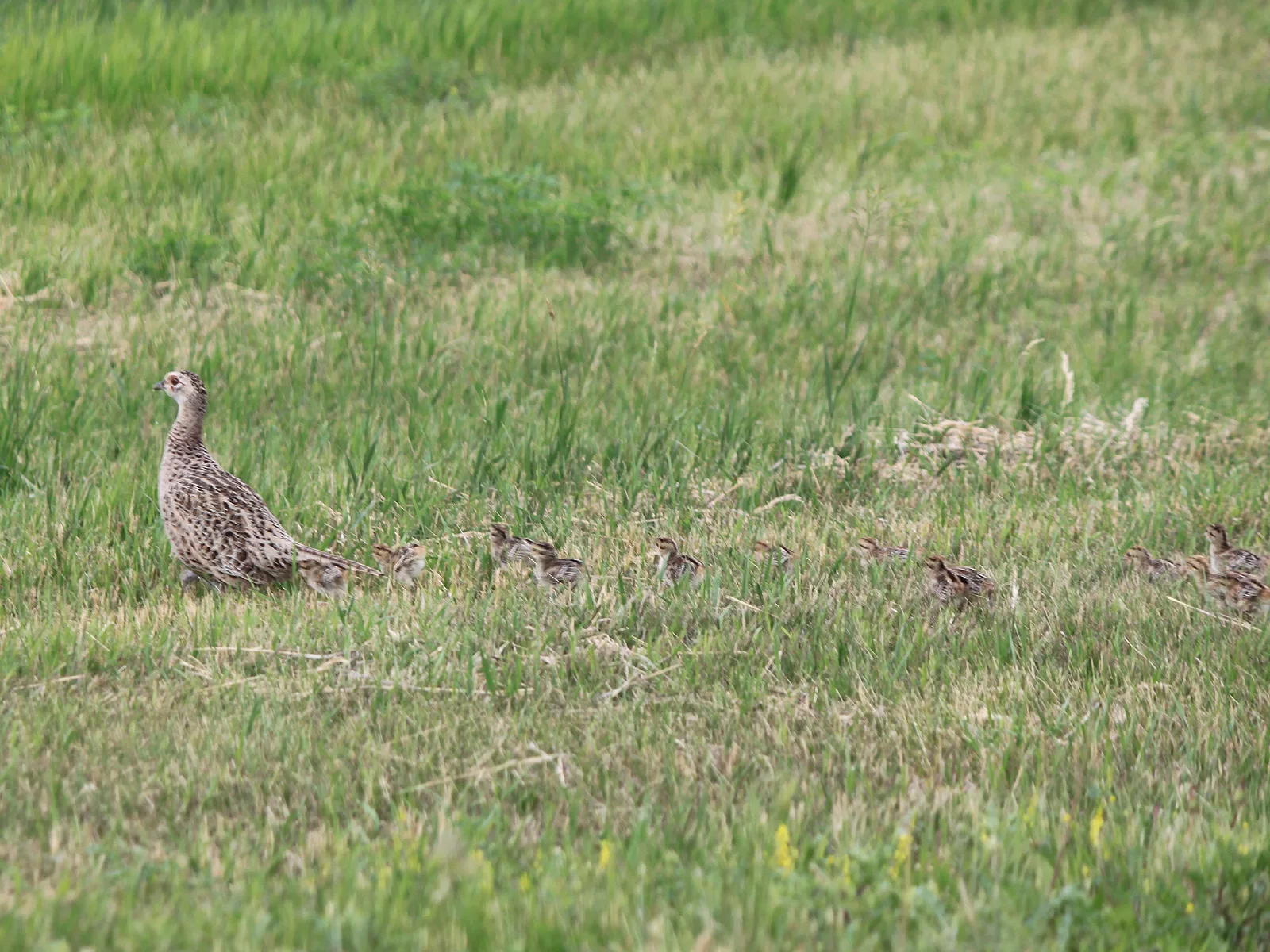
In the Clear. By backdating wing samples from harvested pheasants, biologists are able to determine peak hatch dates and provide guidance on ideal dates for haying to protect young upland birds, like these pheasant chicks being moved through cut brome by a hen near Bismarck, N.D. Simonson Photo.
By Nick Simonson
Generally favorable conditions met North Dakota’s pheasant hunters in the fall of 2023 during the first two weeks of the season, and then again throughout November and December as conditions improved following a blizzard and subsequent cold snap in late October. It’s likely that hunters will have logged more hours afield in 2023 than in 2022 suggests North Dakota Game & Fish Department (NDG&F) Upland Game Biologist RJ Gross, and as a result the agency will probably see better data in its surveys of both submitted wing samples and hunter provided information tallied in the early goings of 2024.
“For most of the state it was pretty good conditions all the way up to the end of the season. We really didn’t have really big snowbanks to get through. We had a little bit of that ice storm the last couple weeks that was a little worrisome and that made pheasant hunting hard obviously, because you couldn’t be quiet crunching in ice everywhere. From what I heard, it was more positive than negative when it came to bird numbers,” Gross relates on the season.
Habitat conditions for pheasant hunting remained good where hunters had access, as a moderating summer with lots of early moisture and timely rains spurred continued plant growth and maintained the health of grasses throughout the warm weather seasons. This not only provided good cover for sportsmen to explore in autumn, but also sustained cover and insect forage for a solid hatch of pheasant chicks, which Gross relates was timelier than in previous years and more successful than in recent dry seasons such as 2017 and 2021.
“We’ll probably be done with those [wing sample reviews] I would think by the end of February or early March, and it looks like it’s kind of returning back to normal. Last year everything was kind of late, and we had a lot of August-hatched birds. This year it’s looking like it will be back in that June or early July timeframe. Our peak hatch I think will still be around June 10, like it always is, but it doesn’t seem like there’s as many late birds so far [in the 2023 wing samples]” Gross states.
This year’s wing samples will help NDG&F biologists like Gross determine gender makeup of species such as Hungarian partridge and sharp-tailed grouse harvested by hunters, along with the age makeup of those upland species and the rooster pheasants harvested this fall in addition to an extrapolation of that average hatch date for those young-of-the-year birds which were harvested. Gross revealed that thousands of wings are part of the agency’s review.
“We’ll get upwards of 5,000 wings that are turned in to us, and that’s really good data that we can use, and we’ve been doing that since the 1960s. We can backdate the pheasant from when it was harvested to when it was hatched and we can look at our peak hatch dates in North Dakota,” Gross suggests, adding that the information helps the agency manage habitat on state-owned lands and provide haying recommendations to producers for better pheasant recruitment on private acres.
On tap for this winter is the NDG&F pheasant sex survey, where agents drive routes looking for and tallying numbers of hen pheasants to roosters seen in the field. Due to demands on agency personnel, NDG&F is considering putting this survey on the back burner in future years, as North Dakota is the last state in the pheasant range to do a gender-ratio count for the upland species. Following the sex survey, agents will conduct their annual spring rooster crowing count in May, which will help determine overwinter survival of the birds. The results of that survey are typically published by the NDG&F in late June.
